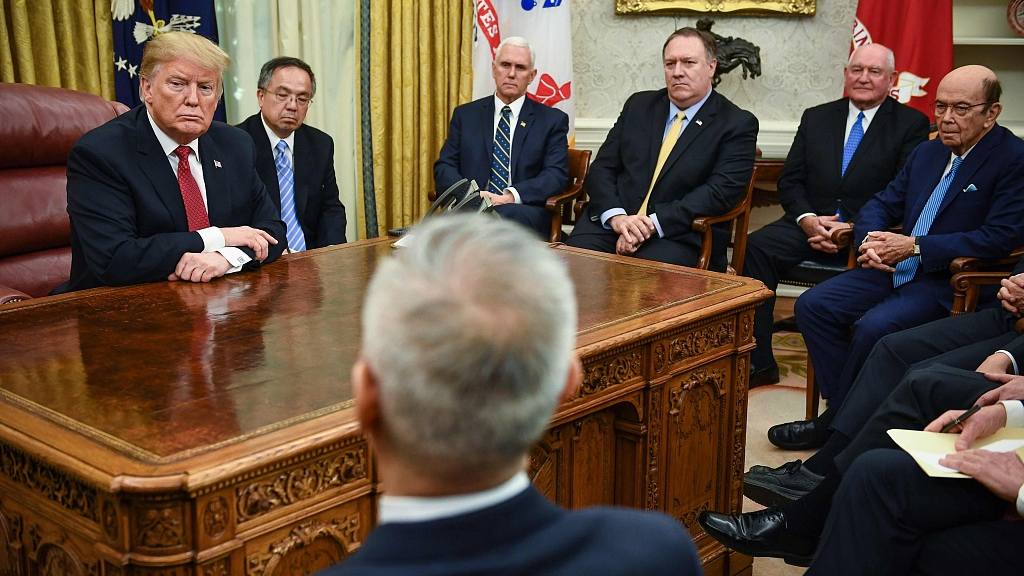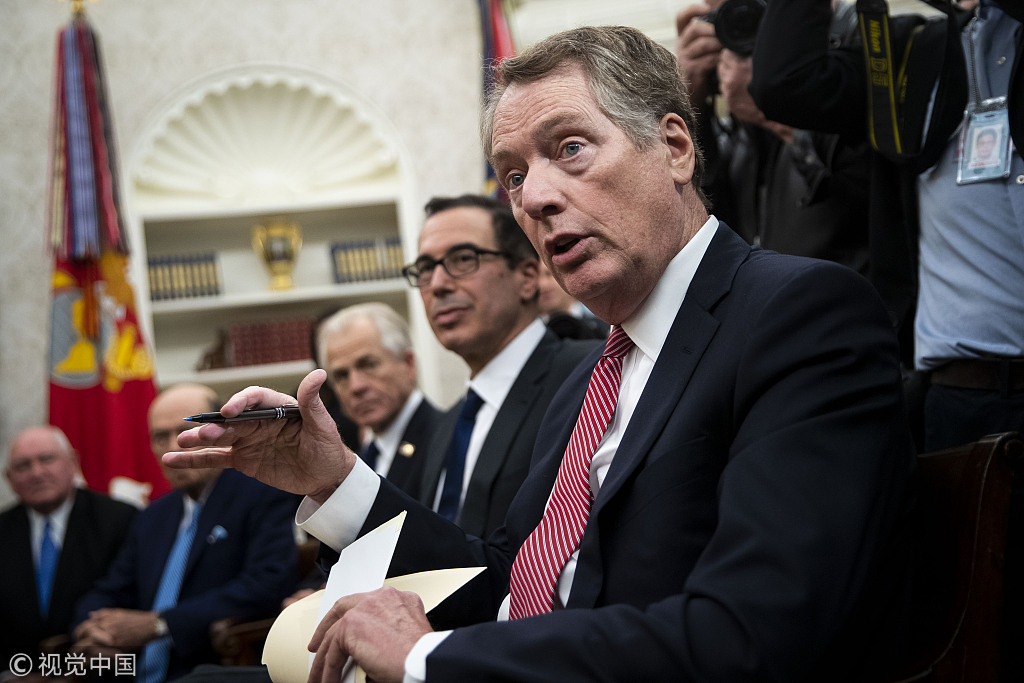
Opinion
12:22, 12-Feb-2019
The key points of this week's China-U.S. trade talks
Updated
15:36, 12-Feb-2019
Shi Huimin

Editor's Note: Shi Huimin is an associate professor at the School of Economics at Renmin University of China as well as a research fellow at its National Academy of Development & Strategy. The article reflects the author's opinion and not necessarily views of CGTN.
U.S. Trade Representative Robert Lighthizer and Treasury Secretary Steven Mnuchin will travel to Beijing from February 14 to 15 for a new round of trade negotiations. The whole world is waiting to see whether the trade conflicts between the top two economies can be solved smoothly.
This week's talks are particularly important and crucial, given what the parties said were the positive outcomes of last month's Washington negotiations. People are wondering whether or not that momentum will continue.
Before the Washington round, it seemed that China would rather talk more about reducing the trade imbalance, while the U.S. was more about structural reforms.
Both China and the U.S. showed great sincerity during the negotiations and concluded that the talks were constructive and the results could be promising.
Washington's tough attitude seems to have changed a little bit, partially reflected by their greater interest in selling more products and services to China. They have also set more realistic goals about what could be achieved before March 1.
For this new round of trade talks in Beijing, the two sides could reach some agreements on the specific plan of China to purchase U.S. goods and services. This target is the easiest one on which both sides have common interests.

Robert Lighthizer, U.S. Trade Representative, speaks beside Steven Mnuchin, U.S. Treasury Secretary, and Peter Navarro, director of the National Trade Council, during a meeting with U.S. President Donald Trump and Liu He, China's vice premier during trade talks on Jan. 31, 2019. / VCG Photo
Robert Lighthizer, U.S. Trade Representative, speaks beside Steven Mnuchin, U.S. Treasury Secretary, and Peter Navarro, director of the National Trade Council, during a meeting with U.S. President Donald Trump and Liu He, China's vice premier during trade talks on Jan. 31, 2019. / VCG Photo
Chinese consumers are showing growing demand for U.S. products of high quality. The U.S. government is eager to reduce the trade deficit with China.
They could also agree to further clarify and make some distinctions on what kinds of discussions on structural issues could be carried forward in the near term and what may have to be rescheduled for a much longer time frame.
Among the structural problems raised by the U.S., reducing the tariffs and lowering market access barriers are relatively easy to achieve. These two aspects are in line with China's policy of reform and opening-up.
Other structural problems are unlikely to be solved in the short term such as intellectual property protection. Protecting intellectual property could help China's long-term economic growth. However, it is a problem of the ability to implement, not a problem with China's willingness.
The ability to protect intellectual property is associated with the economic development level. Given the fact that China is still a developing country, it is unrealistic to ask China to raise the intellectual property protection standard as high as the ones in developed countries. China needs time to gradually improve its capacity to protect intellectual property.
Industrial policy and subsidies to state-owned enterprises touch deeply on the ideological gaps between China and the United States. There is nothing wrong in China applying certain industry policies to boost economic growth.
Historically, many developed countries have had similar industrial policies when they were developing economies. The U.S. should accept and respect diversified development paths, stop thinking in terms of winning or losing, and reach a deal with China at the earliest date.
(Cover photo: U.S. President Donald Trump meets China's Vice Premier Liu He (foreground) at the White House in Washington, January 31, 2019. /VCG Photo)
(If you want to contribute and have specific expertise, please contact us at opinions@cgtn.com.)

SITEMAP
Copyright © 2018 CGTN. Beijing ICP prepared NO.16065310-3
Copyright © 2018 CGTN. Beijing ICP prepared NO.16065310-3